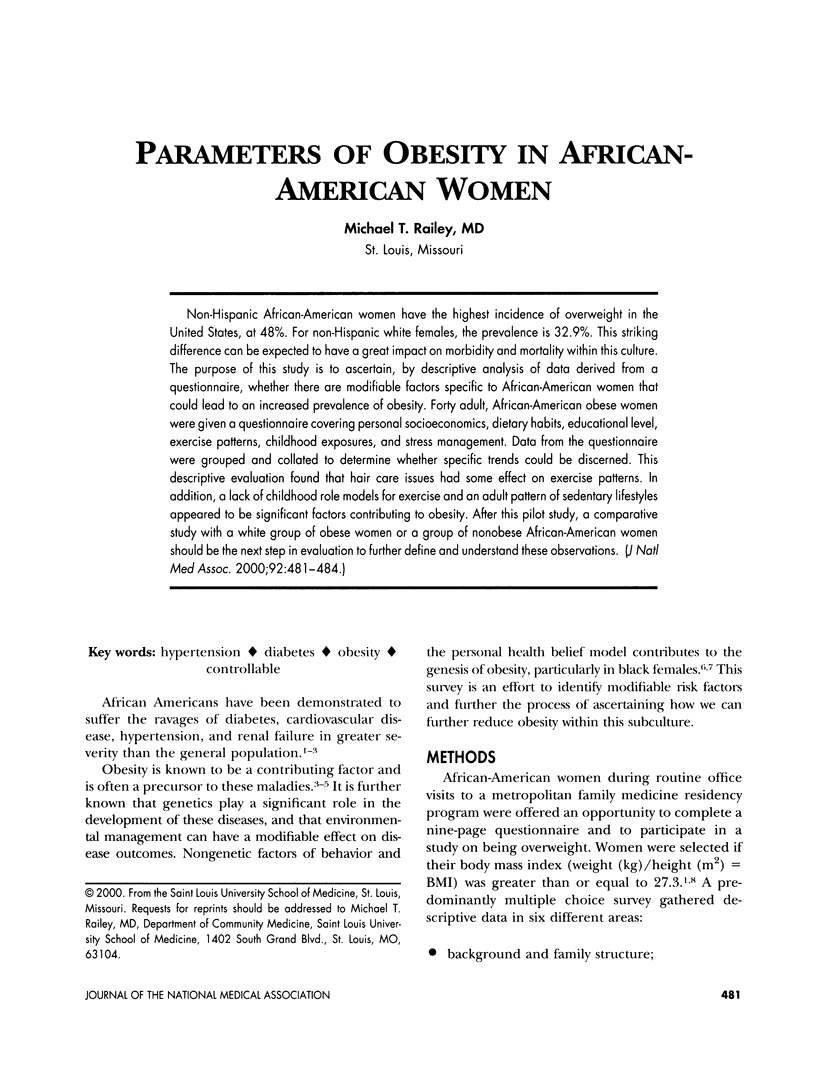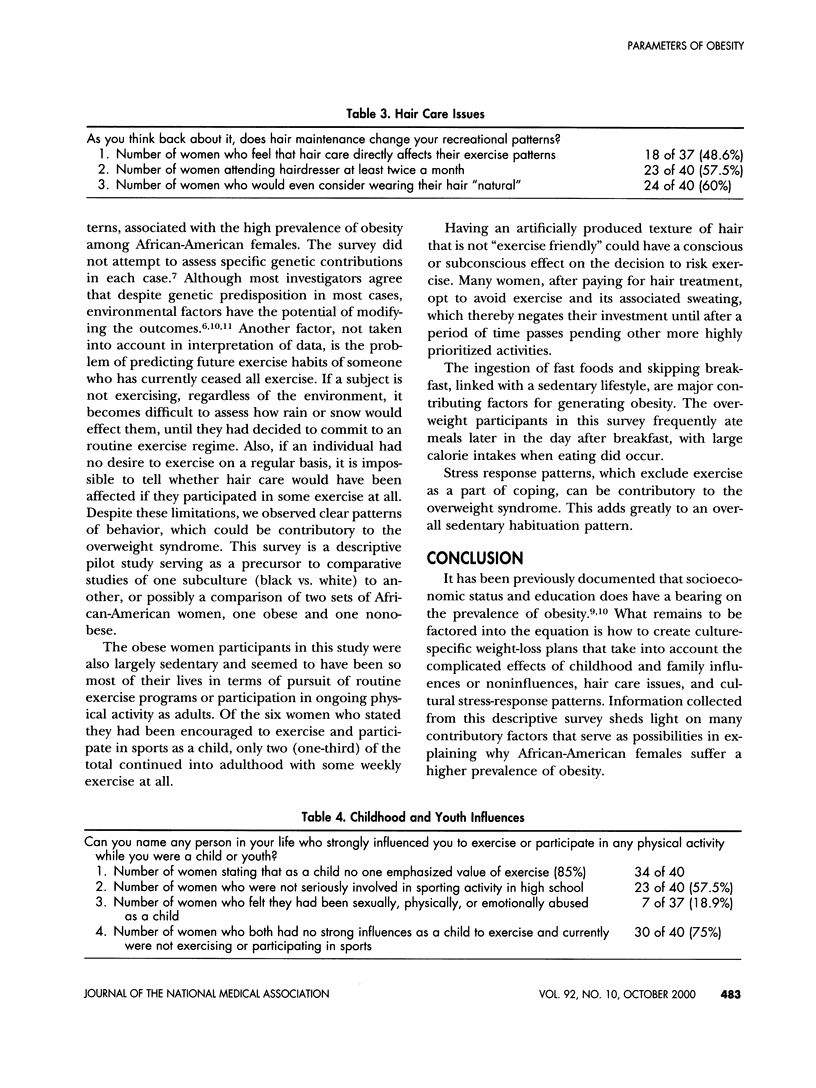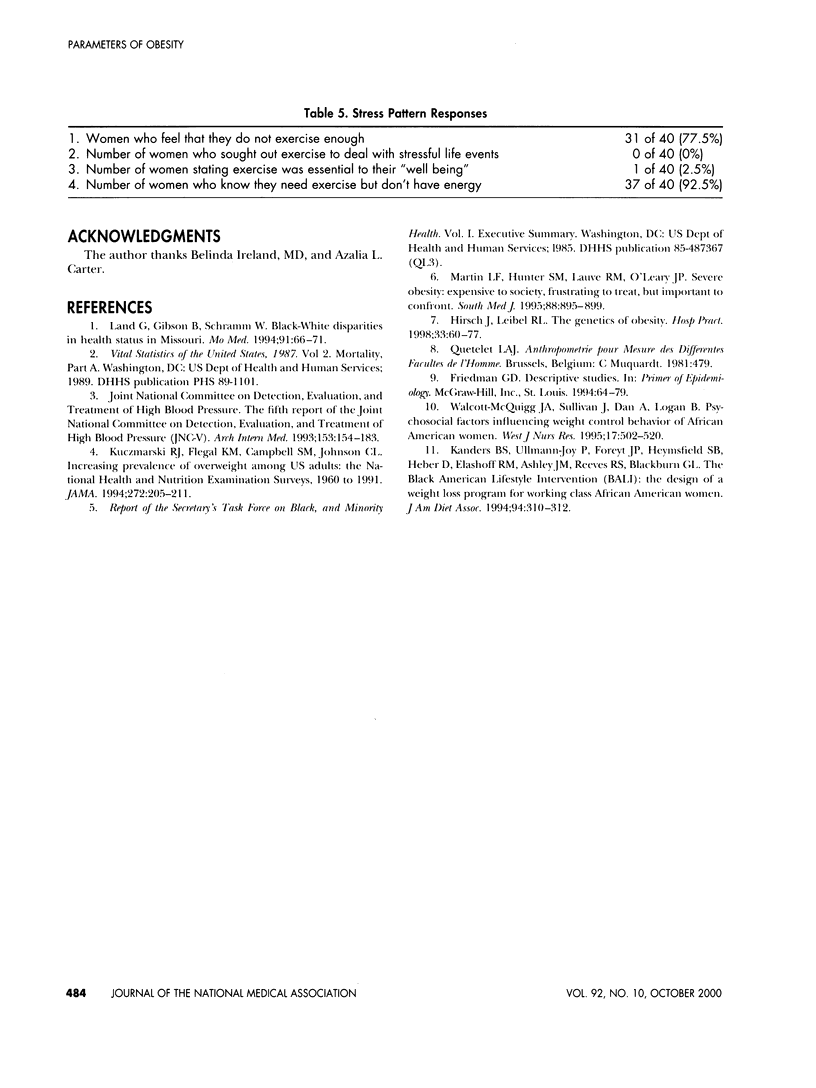Abstract
Non-Hispanic African-American women have the highest incidence of overweight in the United States, at 48%. For non-Hispanic white females, the prevalence is 32.9%. This striking difference can be expected to have a great impact on morbidity and mortality within this culture. The purpose of this study is to ascertain, by descriptive analysis of data derived from a questionnaire, whether there are modifiable factors specific to African-American women that could lead to an increased prevalence of obesity. Forty adult, African-American obese women were given a questionnaire covering personal socioeconomics, dietary habits, educational level, exercise patterns, childhood exposures, and stress management. Data from the questionnaire were grouped and collated to determine whether specific trends could be discerned. This descriptive evaluation found that hair care issues had some effect on exercise patterns. In addition, a lack of childhood role models for exercise and an adult pattern of sedentary lifestyles appeared to be significant factors contributing to obesity. After this pilot study, a comparative study with a white group of obese women or a group of nonobese African-American women should be the next step in evaluation to further define and understand these observations.
Full text
PDF



Selected References
These references are in PubMed. This may not be the complete list of references from this article.
- Kanders B. S., Ullmann-Joy P., Foreyt J. P., Heymsfield S. B., Heber D., Elashoff R. M., Ashley J. M., Reeves R. S., Blackburn G. L. The black American lifestyle intervention (BALI): the design of a weight loss program for working-class African-American women. J Am Diet Assoc. 1994 Mar;94(3):310–312. doi: 10.1016/0002-8223(94)90374-3. [DOI] [PubMed] [Google Scholar]
- Kuczmarski R. J., Flegal K. M., Campbell S. M., Johnson C. L. Increasing prevalence of overweight among US adults. The National Health and Nutrition Examination Surveys, 1960 to 1991. JAMA. 1994 Jul 20;272(3):205–211. doi: 10.1001/jama.272.3.205. [DOI] [PubMed] [Google Scholar]
- Land G., Gibson B., Schramm W. Black-white disparities in health status in Missouri. Mo Med. 1994 Feb;91(2):66–71. [PubMed] [Google Scholar]
- Martin L. F., Hunter S. M., Lauve R. M., O'Leary J. P. Severe obesity: expensive to society, frustrating to treat, but important to confront. South Med J. 1995 Sep;88(9):895–902. doi: 10.1097/00007611-199509000-00001. [DOI] [PubMed] [Google Scholar]
- Walcott-McQuigg J. A., Sullivan J., Dan A., Logan B. Psychosocial factors influencing weight control behavior of African American women. West J Nurs Res. 1995 Oct;17(5):502–520. doi: 10.1177/019394599501700504. [DOI] [PubMed] [Google Scholar]


